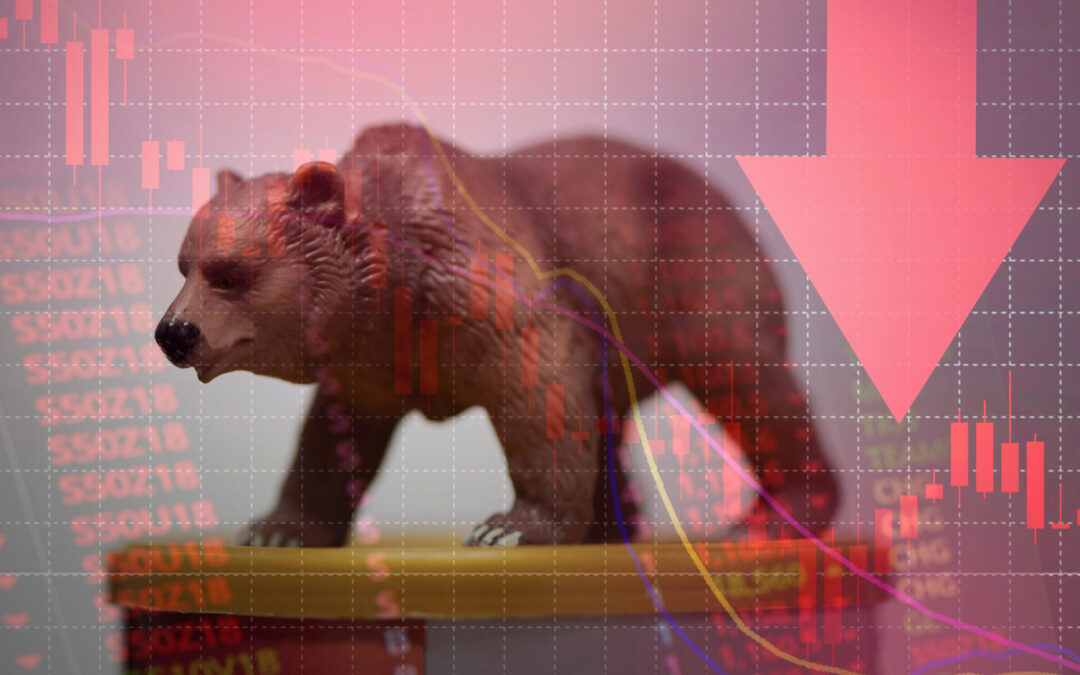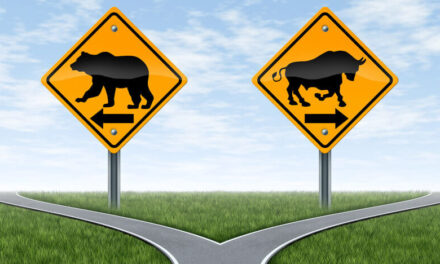Editor’s Note: Tom McClellan of The McClellan Market Report published a piece in September that had the whole office talking about when the bear market would hit its bottom. (Read about why he thinks it won’t happen until 2024 here.) Adam, Charles and Matt chimed in on what they think of McClellan’s call below. And if you want to take a guess at when the bear market will bottom out email us at Feedback@MoneyandMarkets.com with your own prediction. Whoever guesses the closest exact date will win a $500 gift card. — Chad Stone, Managing Editor, Money & Markets
Inverted Yield Curve Is Just One Piece of the Puzzle

Charles Sizemore, Co-Editor, Green Zone Fortunes
On one major point, I agree with McClellan.
As I noted recently in the Money & Markets Daily, the yield curve is inverted in a big way, with shorter-term yields higher than longer-term yields. I’ve been recommending 2-year Treasuries as a low-risk place to stash idle cash.
An inverted yield curve has a perfect batting average in predicting recessions. Except…
We’re already in a recession if you follow the technical definition. Gross domestic product (GDP) fell, albeit slightly, in the first and second quarters.
Now, this doesn’t mean that the recession can’t get a lot worse.
Apart from a little weakness in home sales, this doesn’t look or feel like a real recession yet. Unemployment is still low, inflation is high and, as an anecdotal indicator, it’s still hard to get a table at a decent restaurant.
It’s also important to remember that the market tends to be a leading indicator. It almost always falls before a recession is called and tends to bottom and start rising again before the recession ends.
Finally, as McClellan himself points out, the data today is skewed by the experience of the pandemic. And while I’m not brave (stupid?) enough to say “this time is different,” I do think a little nuance is key.
Ultimately, the timing of the bottom may be in the hands of the Federal Reserve. It inflated the COVID bubble and then initiated the post-COVID crash by taking stimulus away.
I’ll go into more detail tomorrow as to when I expect the bear market to end.
Real Yields and Utilities Are Key

Matt Clark, Research Analyst
In the McClellan piece Adam shared, the point was to illustrate how inverted yields predict recessions … not market bottoms.
What McClellan doesn’t take into consideration is “real yields.”
These are calculated by subtracting expected inflation from nominal Treasury yields.
In simple terms, it’s the return a bond investor earns from interest payments after inflation.
These real yields have turned positive since the start of the year, but that doesn’t mean stocks will move in lockstep.
Take for example 2017 to 2018.
Real yields doubled — suggesting stocks would sell off.
Instead, from January 2017 to October 2018, the S&P 500 gained nearly 30%.
Another way to poke a hole in the correlation is to look at bonds and utilities.
Interest rate hikes tend to steer investors away from utilities and more into bonds.
Since January, the U.S. Treasury 10-Year Constant Maturity has increased 152%. But utilities have remained flat.
In theory, utility stocks should have nosedived.
While an inverted yield curve may show a recession, it’s not the best indicator for a stock market bottom.
On Wednesday, I’ll share a valuation metric that should paint a clearer picture of how we can spot when the market hits its low.
Bear Markets Aren’t One Size Fits All

Adam O’Dell, Chief Investment Strategist
I take issue with a few things here…
For one, it’s known that inverted yield curves signal recessions. (Matt and Charles both hit on that above.)
But to shift forward the yield curve by 22 months — implying that all bear markets last the same length of time — that’s just not true.
In fact, there’s wide dispersion in the average length of bear markets. The average is 11 months, but they can be as short as one month (2020) … or as long as 30 months (2000 to 2002).
Otherwise, there are few data points to confirm the relationship McClellan suggests.
What’s more, several of the data points include times when the 10-to-1 spread bottomed (in hindsight, I’ll note) … but did not invert (i.e., it wasn’t below the zero line in the chart). Several of those questionable signals came during bull markets, when neither recessions nor bear market drops were present.
Lastly, I’m always skeptical of models that don’t work when, according to the proponent of the model, “exogenous” factors overwhelmed them. It sounds like that’s what McClellan is suggesting, when he says:
This disrupted lots of models, cycles and other predictions of what the stock market was going to do. So we should not necessarily fault this model for failing at a time when the Fed was throwing $1 trillion a month at the stock market.
That sounds to me like a “right/wrong” judgement of the Fed’s actions … and a convenient justification for why the model didn’t work last time … or may not work ahead.
Bottom line: We live in a reality in which investors make decisions based on the Fed’s actions. So I find more value in making real-time assessments of what investors are actually doing when trying to call a top or bottom.
And I’ll have more on that on Thursday.
Watch your inbox for more in the Money & Markets Daily throughout the week as Adam, Charles and Matt tell you how they are tracking the bear market and what it means for you as an investor.
And don’t forget to email Feedback@MoneyandMarkets.com with your prediction for the exact day you think the bear market will bottom out. Whoever guesses the closest day will win a $500 gift card!




